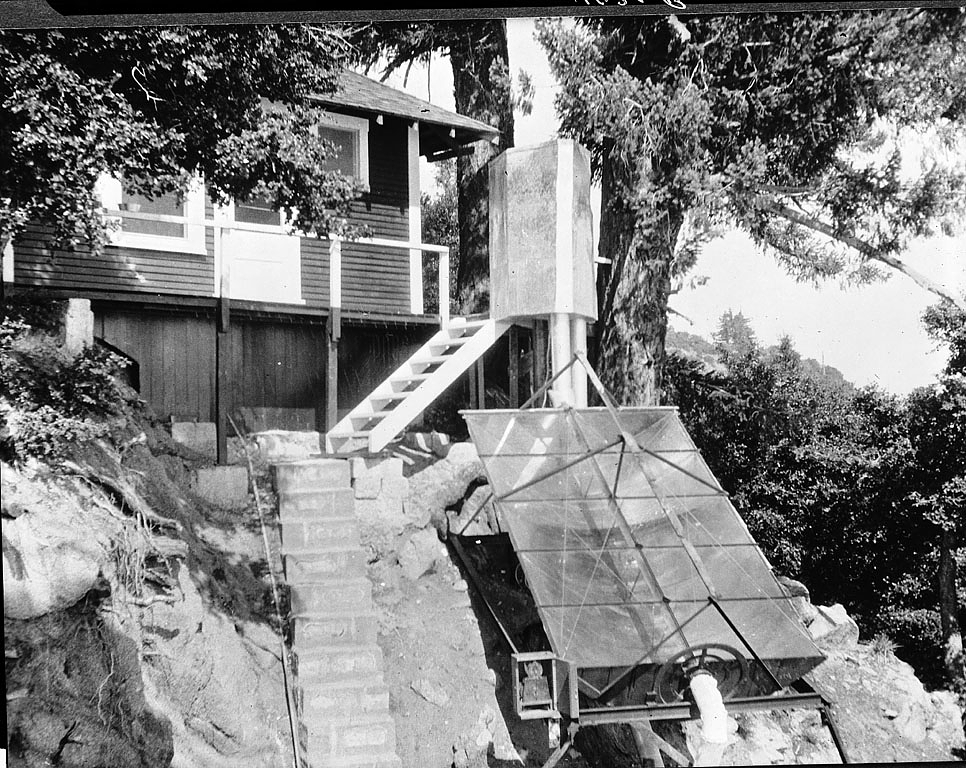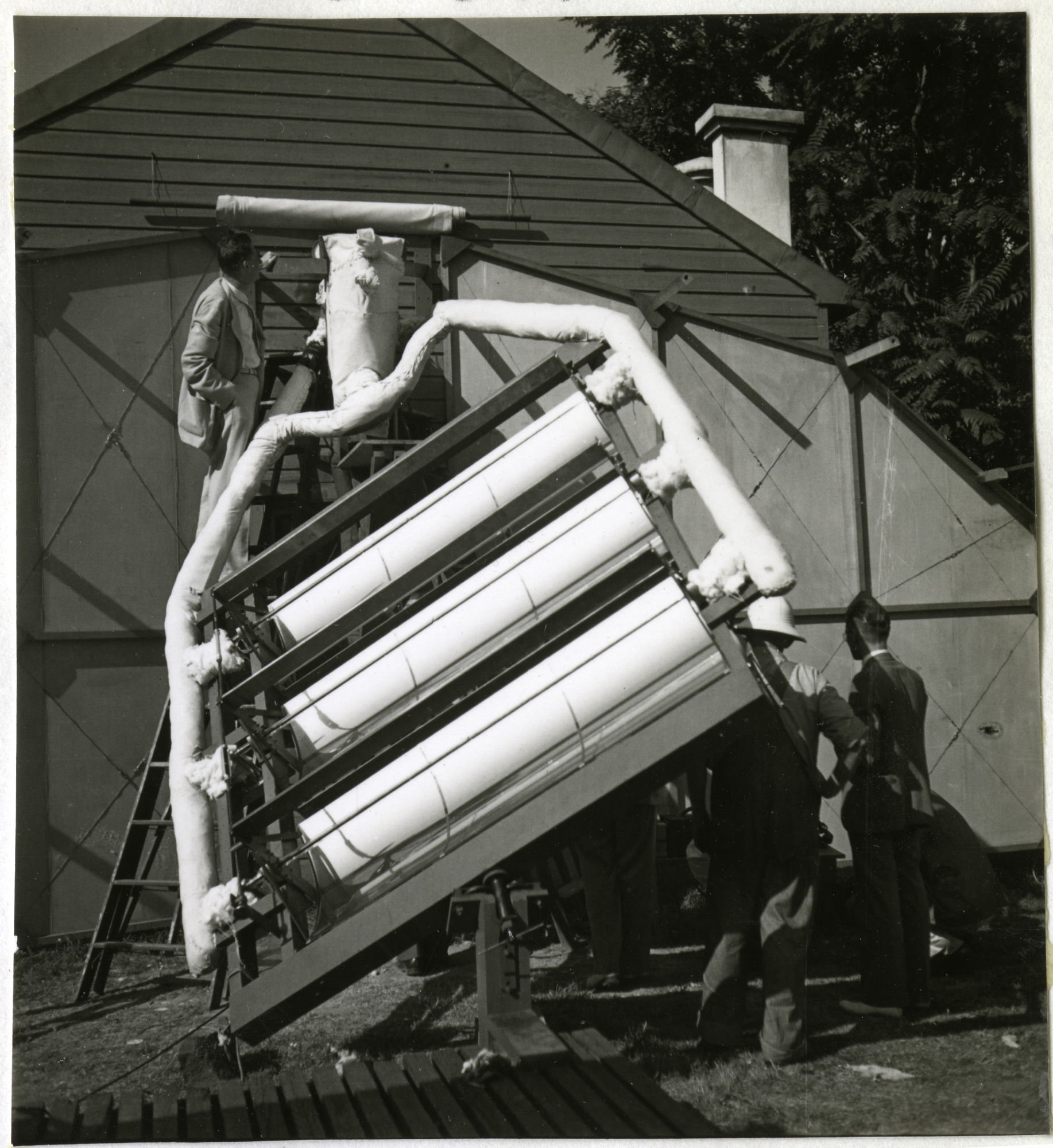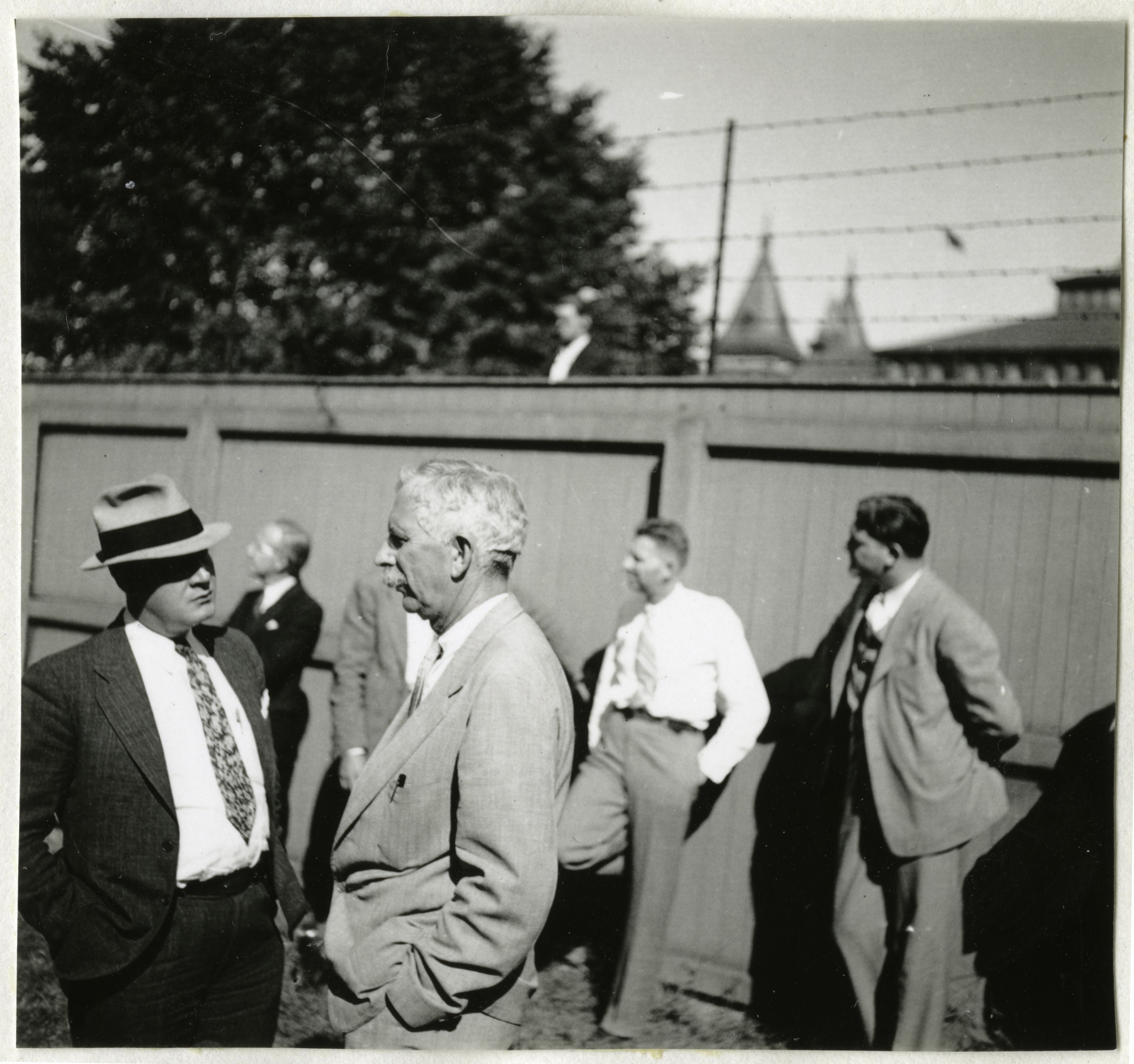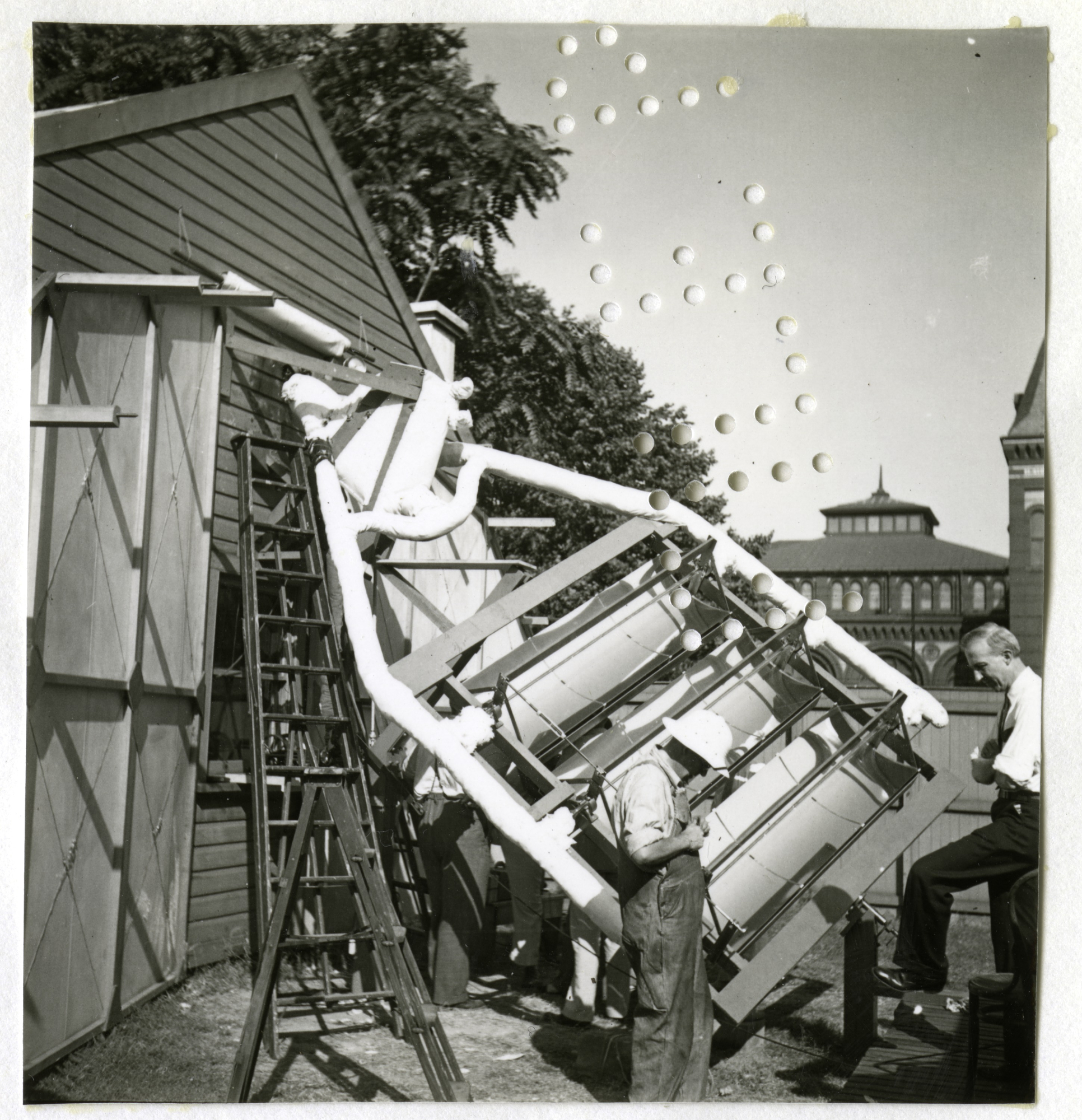Charles Greeley Abbot, fifth Secretary of the Smithsonian, was fascinated by the sun and its power. His sense of wonder and ingenuity knew no bounds. Not only did he study it, but he used his scientific knowledge and skill as an instrument maker to harness the sun’s energy at remote observatories for cooking. He designed, built, and patented a small tabletop cooker for heating water for the Solar Shed in the South Yard behind the Smithsonian Castle building, as well as for generating electricity.
Although nowadays using solar energy to do all of these things is common, efficient and cost-effective, in the 1920 and 30s it was an “out there” concept--and generating electricity was the farthest “out there.” Nevertheless, Abbot made it happen when the first solar-powered radio broadcast was made by NBC’s WRC radio station from the South Yard.
On September 30, 1936 an array of curved mirrors were rolled out, focusing sunlight onto tubes filled with water. These water-filled tubes created steam that ran a generator, making enough electricity to power a short radio broadcast. A recording of this broadcast was not made, but no matter how brief it may have been, it proved that the sun’s energy could be harnessed to generate electricity powerful enough for communication.
You can learn more about the history of solar energy at an exhibit opening 11/28/2016 at the Smithsonian's National Museum of American History.
Astrophysicist and fifth Secretary of the Smithsonian Institution (1928-1944) Charles G. Abbot with a half horse-power solar boiler, exhibited at the International Congress of Engineers and used by the National Broadcasting Company with a steam engine and generator to broadcast to the United States and Canada, 1936. Smithsonian Institution Archives, Image Number MNH-4694C.
Solar shed in the South Yard behind the Smithsonian Institution Building or "Castle," circa 1950s. This shed housed solar collectors for Secretary Charles G. Abbot's scientific research. Smithsonian Institution Archives, Image Number SIA2011-1493.
Astrophysicist Dr. Charles Greeley Abbot's solar cooker, which cooks food by solar energy, at Mount Wilson, California, circa 1920s. Smithsonian Institution Archives, Image Number MAH 11020-B.
Smithsonian Institution employees are working in the South Yard, behind the Smithsonian Institution Building or "Castle", on the installation of the solar powered boiler developed by fifth Smithsonian Secretary and astrophysicist Charles Greeley Abbot (1928-19244). The group is preparing for a news broadcast by the National Broadcasting Company (NBC). Smithsonian Institution Archives, Image Number SIA2011-0168.
In the South Yard behind the Smithsonian Institution Building of "Castle", fifth Secretary and astrophysicist Charles G. Abbot and others preparing the solar boiler for a news broadcast. The National Broadcasting Company (NBC) filmed the test and by operating an electric generator a short program was broadcast by solar power.Smithsonian Institution Archives, Image Number SIA2011-0172.
Group of people gathered for a news broadcast concerning astrophysicists and fifth Secretary of the Smithsonian Institution Charles Greeley Abbot's solar powered invention. Smithsonian Institution Archives, Image Number SIA2011-0169.
In the South Yard behind the Smithsonian Institution Building or "Castle", preparations are being made for a solar broadcast on September 30, 1936, when fifth Smithsonian Secretary and astrophysicist Charles G. Abbot would test his solar radiation steam boiler of his design. Smithsonian Institution Archives, Image Number SIA2011-0167.
Related Resources
The Smithsonian Secretaries: That Tall Man from New York, Part I, The Bigger Picture, Smithsonian Institution Archives
Keeping in Touch, The Bigger Picture, Smithsonian Institution Archives
Accession 86-161, Charles Greeley Abbot Papers, c. 1891-1950s, Smithsonian Institution Archives








Leave a Comment